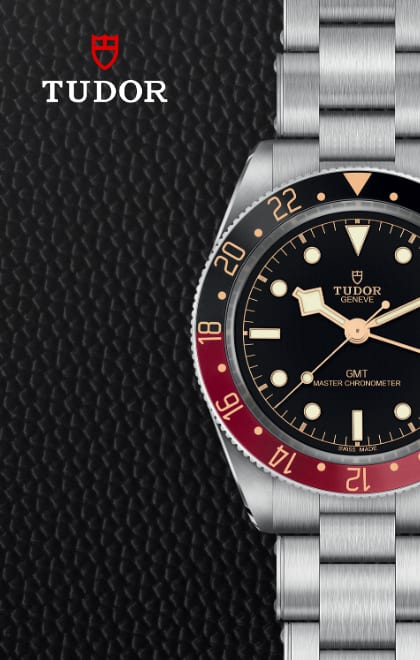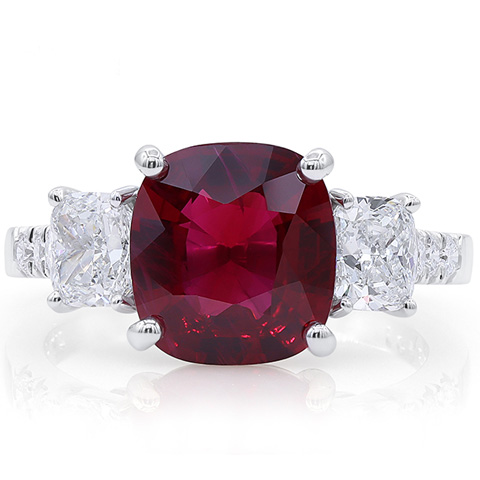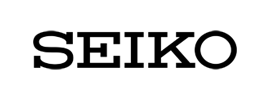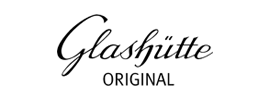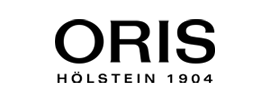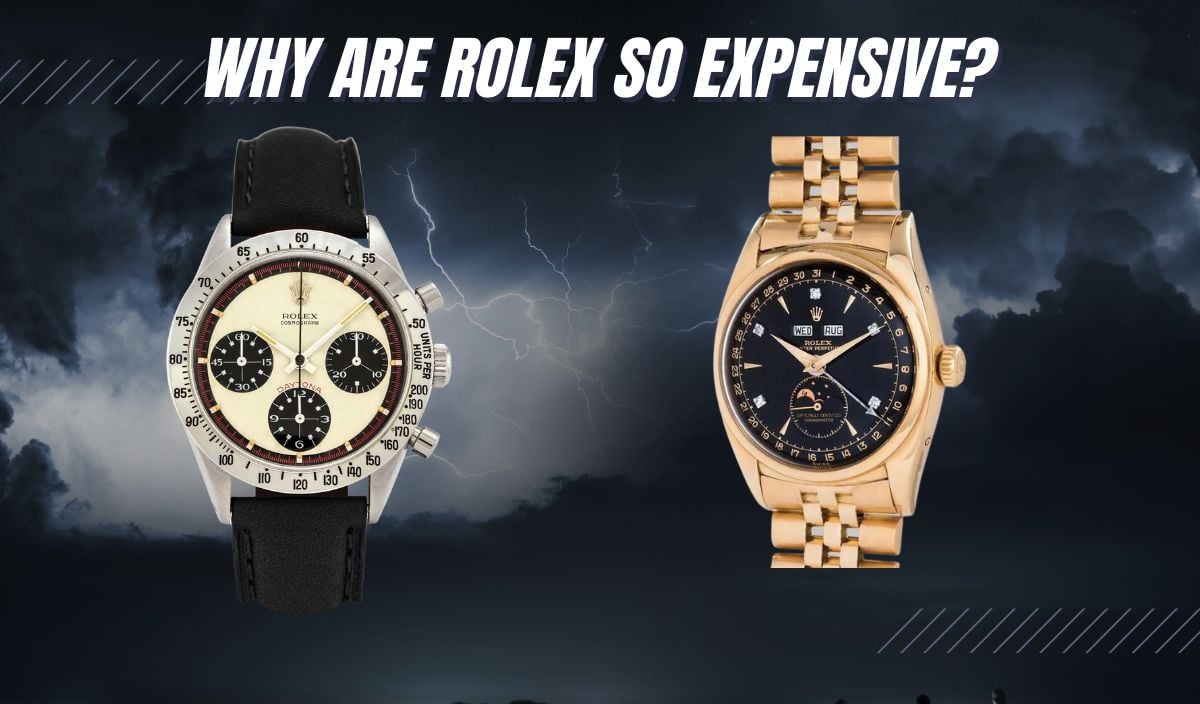
Why Are Rolex So Expensive? (The Answer WILL Surprise You!)
When it comes to luxury watches, few names command the same level of admiration and recognition as Rolex. With a history spanning over a century, Rolex has established itself as a symbol of precision, craftsmanship, and enduring style.
Long desired by horologists and casual watch-wearers alike, Rolex remains the number one timepiece watch enthusiasts want to own when they “make it.” They may purchase all the Rolex wannabes from low and mid-range brands at first, but when they finally become successful, they buy a Rolex watch.
However, entering the elevated world of Rolex ownership is expensive. Very expensive. Below we will take a look at the reasons for the high prices of Rolex watches and all the factors influencing them.
About Rolex Watches
Wilsdorf’s relentless quest for excellent watches in both form and function paved the way for a unique kind of watchmaking. Currently, the luxury watch giant produces about a million timepieces each year, dominating a quarter of the luxury watch market, but Rolex had a very humble beginning.
The plan of action to boost Rolex watches from time-telling devices to luxury collectibles can be traced to some marketing decisions made in the 1960s. From the onset, Wilsdorf understood the appeal of essential precision watches for professionals and adventurers and secured the brand’s link with luxury.
Beyond its horological significance and investment potential, owning a Rolex watch is a truly immersive experience. Rolex has meticulously crafted its brand image and customer experience, ensuring that every aspect of owning a Rolex reflects the values of luxury, precision, and timeless elegance.
From the elegant boutiques designed to exude sophistication to the attentive and knowledgeable staff, Rolex strives to create a seamless and exclusive shopping experience. The brand also emphasizes customer service and after-sales support, offering maintenance services and warranties to ensure that Rolex watches continue to perform at their best for generations.
On average, the price range for most Rolex stainless steel watches falls between $7,000 – $12,000 MSRP. Different factors ranging from collection popularity to materials, complications, and movement all affect the price of a Rolex watch.
Rolex remains the leader in the luxury watch market despite many prestigious high-end Swiss watch brands crafting tons of highly coveted watches. As a family heirloom, the longevity of each Rolex watch is a testament to its quality and craftsmanship.
Rolex watches are crafted from some of the best materials and can be obtained from any of the brand’s 1,816 authorized retailers around the world. However, it is very difficult to buy most models directly from authorized dealers. As a matter of fact, one can spend months or even years on a waiting list, making prospective buyers flock to the secondary market.
The secondary market has been a thorn in the flesh of many luxury watch manufacturers, but it contains an endless selection of new and secondhand watches at prices not bound to the MSRP.
In addition to the prestige and cult following status that specific models have gained, fans of the brand as well as newcomers, are willing to invest large amounts of money in a single Rolex watch.
Rolex’s commitment to philanthropy is worth mentioning as well. The brand has established various partnerships and initiatives to support environmental conservation, scientific exploration, arts and culture, and more. This dedication to making a positive impact adds a layer of significance and pride to owning a Rolex watch.
Rolex is ranked the third most recognized Swiss brand, only behind Nescafe and Nestle, and is the 57th most powerful brand in the world.
The History of Rolex
Rolex was founded in 1905 in London by Hans Wilsdorf and Alfred Davis under the name “Wilsdorf and Davis” in London, England. The company initially focused on the distribution of watches, sourcing movements from Swiss manufacturers. However, Wilsdorf had the vision to create wristwatches that were not only precise but also reliable and durable.
In 1908, Wilsdorf changed the name of the brand to Rolex. He desired a name that was short enough to fit on the dial and easy to pronounce. Rolex was chosen because, in addition to meeting the aforementioned criteria, he thought it was onomatopoeic, sounding like a timepiece being wound.
Wilsdorf’s commitment to accuracy made the British government award a Class A precision certificate to a Rolex watch as early as 1914. This made it the first wristwatch to pass stringent durability and precision tests, traditionally given only to marine chronometers.
Wilsdorf’s early display of considerable talent for publicity was an exciting distinction that paved the way for Rolex’s unsurpassable recognition. In 1919, operations were moved from England to La Chaux-de-Fonds, Switzerland, and a year later, the company’s name was officially changed to Rolex SA.
Rolex’s reputation for producing robust tool watches began to take shape in the early 20th century. They introduced the Oyster case in 1926, a significant innovation in watch design. This achievement demonstrated their commitment to accuracy and set the stage for their future advancements in watchmaking.
The Oyster case featured a hermetically sealed and waterproof system, protecting the watch’s movement from dust, moisture, and shocks. This launch was a game-changer, as it made Rolex watches highly reliable and suitable for various demanding environments. In 1927, Rolex achieved another milestone when Mercedes Gleitze, a young English swimmer, wore an Oyster watch while attempting to swim across the English Channel.
This event marked the first successful demonstration of the Oyster case’s waterproof capabilities and solidified Rolex’s reputation for producing durable timepieces. While Rolex initially focused on creating reliable tool watches, the brand’s reputation gradually evolved and began to be associated with luxury and prestige.
This transformation was driven by a combination of factors, including advancements in design, marketing strategies, and influential partnerships. In the 1930s, Rolex introduced the Rolex Perpetual movement, which featured a self-winding mechanism powered by the wearer’s wrist movements.
This innovation eliminated the need for manual winding and further enhanced the convenience and practicality of Rolex watches. The introduction of the Perpetual movement solidified Rolex’s position as a pioneer in watchmaking technology.
During the mid-20th century, Rolex established its iconic status by creating timeless and distinctive watch models. The Rolex Submariner, released in 1953, was the first timepiece to be rated water-resistant up to 100 meters. It quickly gained popularity among professional divers and watch enthusiasts, becoming an emblem of adventure and exploration.
In 1956, Rolex unveiled the Rolex Day-Date, the first wristwatch to display the date and day of the week spelled out in full. This watch became a symbol of success and prestige, often referred to as the “President’s watch” due to its popularity among world leaders, celebrities, and influential figures. Rolex’s association with high-profile individuals and events further elevated its status as a luxury brand.
Over the years, Rolex watches have been favored by prominent personalities, including actors, athletes, and politicians, further cementing their reputation as status symbols. The brand’s marketing campaigns have also played a crucial role in shaping its luxury image.
Rolex has consistently emphasized the craftsmanship, precision, and elegance of its timepieces through carefully curated advertisements and sponsorships of prestigious events. These innovative efforts solidified Rolex in the Horological world as a symbol of excellence and success.
8 Reasons Why Rolex Watches Are So Expensive
1. Brand Recognition
Rolex watches are so expensive because they are crafted by Rolex, the apotheosis of Haute Horology. In case you didn’t know, Rolex is the single most recognizable brand in the world. It is the number one producer of G.O.A.T. models aplenty, the peak of all that luxury stands for, the symbol of class and prestige.
Rolex is representative of precision, functionality, timeless design, elegance, and sophistication in the world of Horology. All of their watches command such high figures because it is Rolex! Rolex has created many cult collectibles for over 100 years and many coveted novelties.
Hans Wilsdorf labored intensely to build a solid brand reputation, and today, over a century later, it shows no sign of slowing down as there is an ever-increasing demand in timekeeping circles.
The company’s outstanding commitment to branding, unsurpassable quality, elegant designs, first-rate accuracy, and super reliable luxury timepieces places it in the highest echelons of watchmaking and craftsmanship. Understandably, this affects the price point of all its watches.
I bet Hans Wilsdorf could never have guessed that a couple of years into the future, people would be willing to spend 1,000 times the original price on a vintage Daytona.
According to Statista, an online portal specialized in data gathering and visualization, brand awareness of Rolex in the United States is at 87%. It is also ranked as the most reputable watch company in the World.
2. Materials
If you’ve ever flicked through Rolex’s vast watch catalog, I’m sure you wanted to know what on earth was used to make such exquisite watches. From lustrous gold to sturdy platinum, Rolex watches are made with some of the best materials on earth. It’s hard to find watch manufacturers who guarantee excellent standards over a long period, but the Swiss giant has consistently stayed ahead of the curve through constant innovation.
Apart from having several proprietary materials produced entirely in-house, the brand rigorously selects the materials for each timepiece. These materials are more expensive than traditional watchmaking components.
Oystersteel is the first and most ubiquitous material used for Rolex watches. It is a high-performance in-house steel of grade 904L, that the brand began using in the year 1985. It is particularly resistant to corrosion and offers an exceptional finish once polished.
It is used primarily in the chemical and aerospace industries and is what guarantees the robustness of Rolex steel watches.
In the early 2000s, the Swiss Marque began creating exclusive 18kt pink gold alloy in its foundry. Gold is combined with elements such as copper, silver, and platinum to form proprietary gold alloys such as Everose gold or with stainless steel to form Rolex Rolesor.
Platinum, an exclusive valued metal, which is more discreet than gold, is also used in many Rolex watches. Sometimes it is mixed with ruthenium or Oystersteel for enhanced robustness and radiance.
A proprietary luminous material called Chromalight is used to enhance legibility in low-light conditions, while Cerachrom is used to create extremely hard ceramic bezels. The versatility of Oystersteel, the elegance in platinum, and the opulence found in the gold alloys, drive the appeal of these precious timepieces and result in high prices.
3. Durability
According to Rolex, all its timepieces are built and designed to test their mettle further than anything they may ever endure. If you want the very best, you must be willing to pay for it.
A favorite quote frequently used by the brand is “tested to the extremes“. Rolex watches might be synonymous with luxury, but at the core, they are tool watches designed to withstand extreme temperatures, horrible impacts, collisions, extreme depths, magnetic fields, etc.
The toughness, durability, and robustness of their watches meet and exceed the demands of professionals. We have already looked at some of the materials used in the construction of these time-telling machines and that is a key factor contributing to their durability.
In addition to that, Rolex is famous for its quality control measures, so the superiority of each timepiece is the result of a strict methodology. The watches get tested at several points during development and production, and there are testimonials and real-life tests to back up their toughness, durability, and longevity.
From Mercedes Gleitze swimming across the ice-cold waters of the English Channel in 1927 with a Rolex Oyster to Sir Edmund Hillary and Tenzing Norgay taking an Oyster Perpetual watch on their ascent to the top of Mount Everest, Rolex has outstanding testimonies to prove the durability of its timepieces.
4. Movements
The unsurpassable quality of Rolex movements is uncontested. With its focus on superlative quality, the Rolex movement is regarded as almost unparalleled in durability and precision. According to the COSC certification statistics, the luxury watch giant manufactures more chronometers than any mechanical movement manufacturer.
The Official Swiss Chronometer Testing Institute is an organization that certifies the accuracy and precision of Swiss watches using several parameters. All Rolex movements are produced in-house and are accurate to −/+2 seconds a day.
A unique feature of contemporary Rolex movements includes the Parachrom hairspring, which is over ten times more precise than a traditional hairspring when influenced by shocks, magnetic fields, and temperature variations.
Major components of a Rolex movement, like the balance wheel, pallet fork, escape wheel, etc are typically made of materials such as Glucydur. Glucydur is a highly elastic, hard, and non-magnetic alloy of beryllium, copper, and iron. It possesses excellent mechanical properties in addition to a low coefficient of thermal expansion.
Rolex also uses its Everose gold for the balance wheel in some of its movements to help prevent corrosion and render a unique rose color to it. Modern movements like the Caliber 3235 and the Caliber 3255 boast up to 14 patents for enhanced precision, reliability, and durability.
The combination of high-quality materials, rigorous testing processes, and quality control measures add to make the watch prices expensive.
5. Research & Development
Another reason why Rolex watches are so expensive is that mediocrity and commonplace can never be found at Rolex. Rolex has submitted more than 400 patents since its founding and is known to engage scientists in addition to certified watchmakers, mechanics, and engineers. The brand strives for extremely high-quality, accurate, and robust watches.
To guarantee the superlative quality of Its watches, research and development activities that are crucial to the genesis of avant-garde timepieces are carried out consistently. Rolex’s headquarters in Geneva-Acacias has various professional labs and facilities where researchers and scientists work on new Rolex watches and manufacturing processes.
Rolex designs, assembles, and tests all its watches exclusively in Switzerland, thanks to over 9,000 employees at the brand’s four sites. Each of these profoundly knowledgeable staff plays a role in the different stages of tests and protocols to guarantee the reliability and robustness of its timepieces.
6. Assembly
All Rolex watches are developed and assembled in its world headquarters in Geneva. The movements are manufactured in Bienne, while the watch cases and bracelets are produced in Plan-les-Ouates.
Other components like the dials, Cerachrom bezels, and Cerachrom bezel inserts in ceramic are crafted in Chêne-Bourg, where the brand’s gemmology and gem-setting expertise is located.
It is here that the final assembly of the watch components is made in two production units. Even though Rolex uses machines to assist in the assembly process, the majority of the work done is human-operated.
Everything from movements to bracelets is all hand-assembled and evaluated by skilled engineers with the utmost care to ensure exceptional quality.
The watches then go through a series of tests, after which the Superlative Chronometer certification, which attests unparalleled precision, power reserve, waterproofness, and self-winding, is awarded.
7. Low Supply
The limited supply of Rolex watches is a global phenomenon. Despite Rolex being among the highest producers of Swiss watches per year (Rolex produces about a million watches annually), demand has always outstripped supply.
The number of available watches from the brand is grossly insufficient to cope with the growing demand, making the timepieces from the luxury watch giant rare and expensive. Many models had already been increasingly scarce for years, and when COVID caused Rolex to halt production for some time, the situation was exacerbated.
The constrained supply of Rolex watches has also caused an explosion of prices on the secondary market, as purchasing a brand-new Rolex watch from ADs can take up to two years on a waiting list.
8. High Demand
There is an astronomically high demand for Rolex watches across the globe that even the production of one million new watches per year can’t meet. The demand is genuine and not due to mismanagement or customer manipulation by the brand.
The prestige, excellent quality, and elegant designs reinforce the dominance of Rolex watches, and when you add that to the shortage in circulation and high demand, a hike in price is bolstered. Apart from representing a statement of power, prestige, and opulence, Rolex watches hold the potential to be lucrative investments.
All these factors make Rolex the go-to brand for people who have ‘made it’ and want to purchase their first luxury watch. As a result of the global demand from enthusiasts, collectors, and investors, prices are affected significantly.
What’s The Most Expensive Rolex Watch?
The Ice Platinum Daytona ref. 126506-0001, one of the most sought-after timepieces in the world, is the most expensive Rolex watch. Crafted in platinum, this Oyster Perpetual Cosmograph Daytona showcases a mesmerizing ice-blue meteorite dial complemented by a chestnut brown Cerachrom bezel with an engraved tachymetric scale.
The watch features chronograph counters, 18 ct gold applique hour markers, and luminous hands for enhanced legibility. The watch is powered by Rolex’s new caliber 4130, a self-winding mechanical chronograph movement famous for its accuracy and ruggedness.
The movement incorporates innovative technology, including a Parachrom hairspring and a Chronergy escapement, ensuring optimal performance and a power reserve of approximately 72 hours.
The Ice Platinum Daytona holds a special place in the hearts of collectors due to its exclusivity. Rolex produces limited quantities of the Daytona collection, causing their value to skyrocket on the pre-owned market.
With a retail price reaching as high as $75,000, this extraordinary timepiece reflects Rolex’s commitment to precision, luxury, and undeniable allure. The combination of platinum, diamonds, and the unique ice-blue meteorite dial adds to its desirability and contributes to its high price tag.
While the Ice Platinum Daytona is among the most expensive Rolex watches, it is worth mentioning the record-breaking sale of Paul Newman’s Daytona. In 2017, Paul Newman’s personal Rolex Daytona reference 6239 was auctioned by Phillips and set a new record for the most expensive Rolex ever sold.
The watch fetched a staggering $17.8 million, making it a symbol of both horological significance and historical value. This specific Daytona gained fame as the “Paul Newman Daytona” due to the actor’s association with the watch and his passion for motorsports.
The astronomical price achieved by Paul Newman’s Daytona demonstrates the collector’s market’s fascination with rare and historically significant timepieces. The watch’s provenance, unique dial configuration, and association with a prominent figure in popular culture all contributed to its extraordinary value.
What’s The Cheapest Rolex Watch?
Explore the
Biggest Pre-Owned Collection of Luxury Watches
The Oyster Perpetual serves as the entry-level collection in Rolex’s current catalog and is known for its accessibility in terms of price compared to other Rolex models.
While Rolex is often associated with luxury and high-end timepieces, the Oyster Perpetual allows individuals to own a Rolex watch at a relatively more affordable price. Available in various sizes, the Oyster Perpetual watches showcase dials in subtle or vibrant colors, ensuring a contemporary and versatile look.
With a price range starting from $6,400, the Oyster Perpetual offers the timeless Rolex design and quality at a more accessible price point. In addition to the Oyster Perpetual, it’s worth noting that older Rolex watches can also be more affordable options for those seeking a Rolex timepiece.
The pre-owned market offers a range of vintage and discontinued Rolex models that may be obtainable at lower prices compared to their newer counterparts. The availability of affordable older Rolex watches is influenced by various factors, such as the specific model, condition, age, and rarity.
Vintage Rolex watches, particularly those from the mid-20th century, can be appealing to collectors and enthusiasts. These watches may possess unique design elements, historical significance, and a charm that sets them apart from contemporary models.
It’s important to note that even though these older Rolex watches might be more accessible in terms of price, they still exhibit the brand’s renowned craftsmanship and durability. Rolex’s commitment to precision and reliability transcends time, making vintage models a viable option for those interested in owning a Rolex watch without breaking the bank.
Are Rolex Watches a Good Investment?
There’s not been a time in the past 100 years when Rolex watches weren’t in demand. As the supply and demand gap widens for the most popular luxury watch brand in the world, prices keep soaring uncontrollably, making them a viable asset.
Increased scarcity results in greater exclusivity, and the brand has officially stated that current production cannot meet the prevailing demand in an exhaustive way without a reduction in the quality of Its watches. This means Rolex does not plan to increase its production capacity anytime soon, so we can be sure the supply shortage will keep growing.
Studies from a global consulting firm (Boston Consulting Group) reveal that between August 2018 to January 2023, the secondhand market for timepieces from Rolex, Patek Philippe, and Audemars Piguet rose at an annual rate of 20% despite COVID-19. At the same time, the US S&P 500 (Standard and Poor’s 500) stock index rose by only 8%.
S&P 500 is a stock market index that tracks the 500 leading publicly traded companies in the U.S. With pre-owned sales of Rolex watches accounting for almost one-third of the overall $75 billion luxury watch market, people are beginning to consider buying a Rolex as a better investment than stock, and the statistics reveal this truth very clearly.
Many investors have also seen the possibility of diversifying their traditional assets (stocks, bonds, and currencies) by purchasing luxury watches because of their strong price performance in the market. Rolex watches have proven to be a sound investment for collectors and investors, appreciating significantly in value over time. Average buyers of Rolex watches regard their purchase as a stable investment because it is a reputable brand with a consumer base of high-net-worth individuals.
Rolex watches have also demonstrated resilience to economic downturns and market fluctuations. During times of financial uncertainty, luxury goods like Rolex watches tend to hold their value or even appreciate, making them a stable investment option.
Again certain Rolex models carry historical significance or have been associated with iconic individuals, events, or achievements. These watches become coveted collector’s items, commanding higher prices due to their historical context and storytelling potential.
The meticulous attention to detail and use of high-quality materials ensure that Rolex timepieces age gracefully and retain their value over time. These materials not only contribute to the watches’ durability but also add intrinsic value, enhancing their investment potential.
However, it’s essential to note that not all Rolex watches will appreciate at the same rate. Factors such as model, rarity, condition, and historical significance play a significant role in determining a watch’s investment potential. It’s advisable to consult with experts, research market trends, and consider long-term investment strategies before making a purchase solely for investment purposes.
Highly coveted models like the Rolex Daytona, the Submariner, and the GMT-Master II fetch up to 200% of firsthand market prices on the secondhand market. For instance, the Rolex Cosmograph Daytona, which has an MSRP of $15,000 for stainless steel models, can be seen on the gray market for $25,550 to $55,500, well above their official list prices.
Rare vintage editions also enjoy excellent value increases, attracting collectors and investors to the profitability of the Daytona.
Conclusion
Rolex continues to be at the pinnacle of the watchmaking industry, an exemplar of exceptional craftsmanship and a true icon of timekeeping excellence. Owning a Rolex watch is more than just possessing a timekeeping device; it’s a statement of refined taste, a connection to history and tradition, and an investment in a piece of enduring luxury.
It might be expensive, but it has been reported to outperform gold, real estate, and stocks over the past decade. That said, if you have the money for it, don’t hesitate to purchase a Rolex watch, as you’re not likely to lose. Check out our collection of pre-owned Rolex watches here and place your order immediately!
About Exquisite Timepieces
Established in 1998, Exquisite Timepieces is your one-stop shop for all things luxury watches! We are an authorized dealer for 60+ luxury watch brands including Omega, Hublot, Seiko, & Longines! We are proud to showcase one of the world’s largest pre-owned watch collections, including renowned brands like Rolex and Patek Philippe. Check out our brand new watch arrivals here and popular pre-owned listings here.


